In the second part of our guide, we will move on to the first arenas and taken from the second Super Smash Bros: the scenarios of Melee for GameCube
Welcome back for the second episode of ours extra guide to know more the arenas and scenarios of Super Smash Bros. Ultimate, with which we will also dedicate our concluding section to advanced notions. In the last appointment we introduced the two main levels for the competitive scene, and then dissect those taken from the progenitor of the series. Today we will begin to see the first traits from the sequel on GameCube, Super Smash Bros. Melee. As a second extra lesson, we’ll look at one of the most important techniques for aggressive play: lo Smash Meteora. Let’s begin!
Preamble of the Appendix
Here’s what to expect from the Super Smash Bros. Ultimate arena and scenario guide. In each of these twelve events, we will talk about each scenario, its origins, who are the fighters who play at home and, in the case of the DLC, also the availability. No scenario, except for the aforementioned downloadable content, needs to be unlocked: everything is available right from the start of the game. Ironically, you may need to unlock historically associated characters at certain levels, but there is a guide for that too. Furthermore, as for the wrestlers, here too the images precede their respective section. Are you ready?
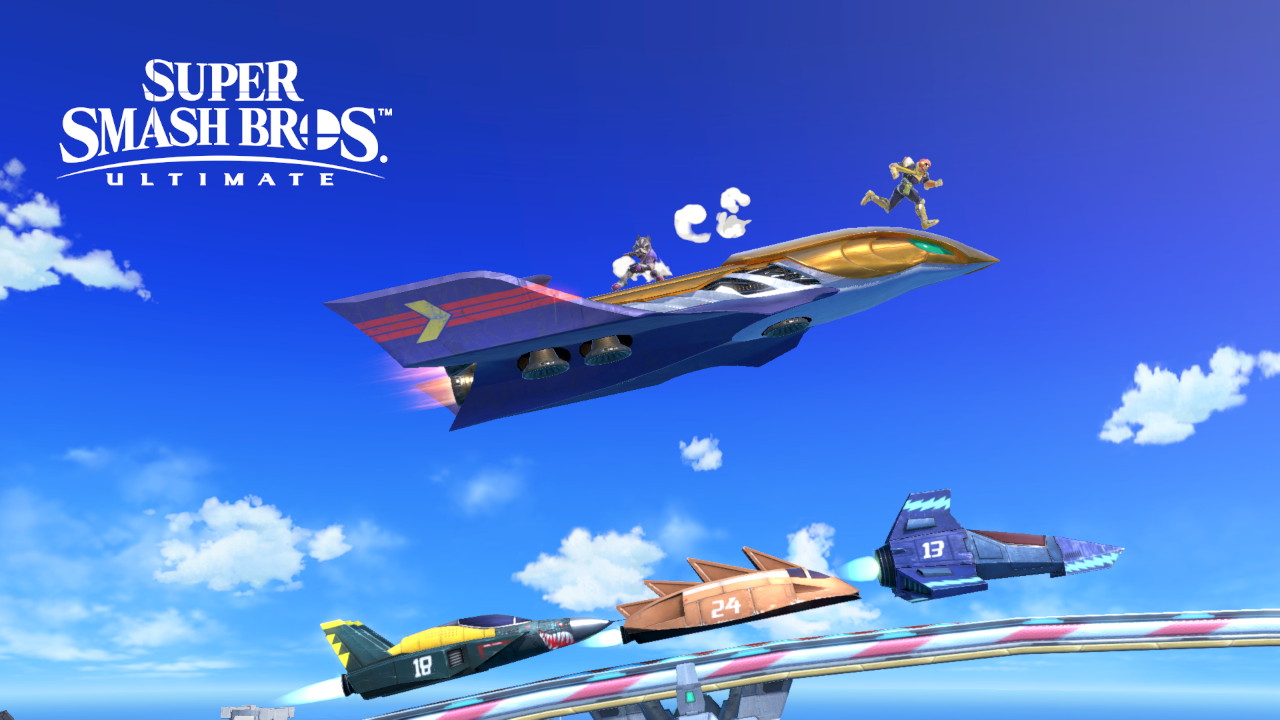
Big Blue – Super Smash Bros. Ultimate arena and scenario advanced guide
The first of the scenarios that we will see today is also one of the arenas whose return from Super Smash Bros. Melee was greeted by the most sensational plebiscite. Big Blue was born as a level to be unlocked in the GameCube title, laterally reinterpreting the level design seen in Mute City (there is a Mute City, but it comes from the fourth chapter). The platforms consist of the spacecraft in the race, and you have to move constantly to avoid being hit.
- Origin: F-Zero (stylistically, F-Zero X)
- Stage representative of: Captain Falcon
- History: Big Blue, in the galaxy where the F-Zero series is set, is a planet mostly covered with water (much more than Earth). The starting platform of the Big Blue circuit is the Falcon Flyer, which is an aircraft belonging to Captain Falcon only in the Smash canon. Not surprisingly, the spacecraft (which is the hangar for Falcon’s car, or the Blue Falcon) also appeared in The Subspace Emissary, adventure mode of Brawl. The F-Zero franchise is currently in hibernation, but the setting has made an appearance in Mario Kart 8 (DLC, Wii U; base game, Switch).
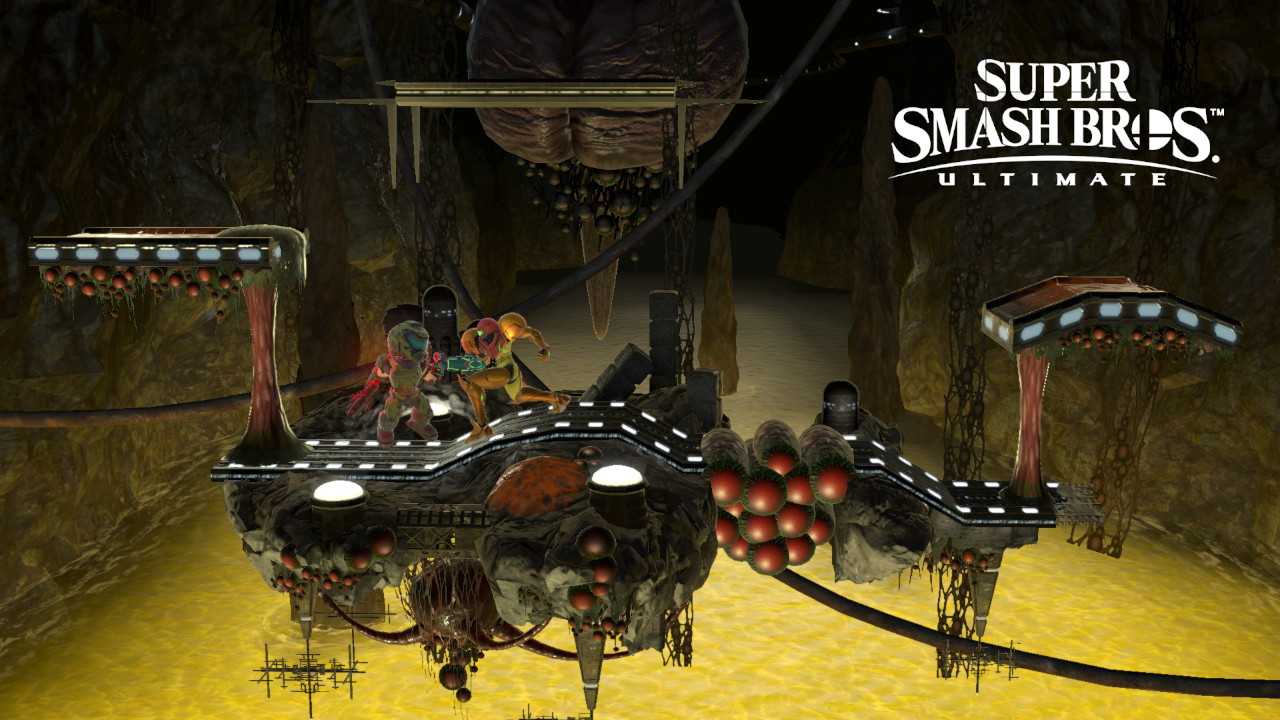
Brinstar – Super Smash Bros. Ultimate arena and scenario advanced guide
Visceral like never before, Brinstar perfectly represents how much Ridley Scott’s films (yes, Samus’ antagonist is named after the director of Alien) have influenced the Metroid saga. The organic mass that holds the platforms together can be attacked to distance them, while Mother Brain in the background enjoys picking up and down the corrosive substance which, of course, causes damage to all fighters it touches.
- Origin: Metroid
- Stage representative of: Samus, Samus Safe Zero
- History: Brinstar is the first section seen in the very first Metroid (1986) on the NES. The peculiarity of this introductory stage is its ability to immediately communicate the nature of a metroidvania to the player. In the original game, in fact, it was necessary to go left to unlock the skill necessary to finally proceed to the right. The first seeds of the open world sprouted soon!
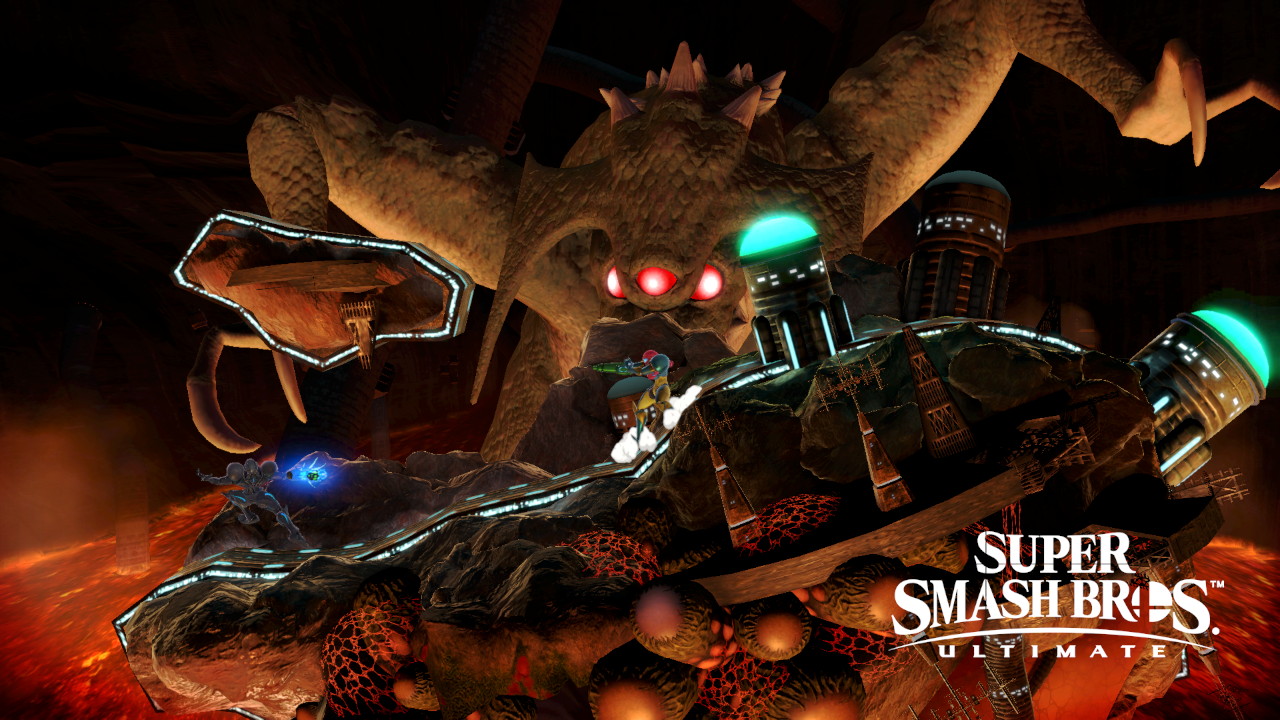
The depths of Brinstar – advanced guide to Super Smash Bros. Ultimate arenas and scenarios
This arena further represents the aesthetic of the Metroid series cosmic caverns, but with an unusual expedient to show the vastness of the maps of a metroidvania. The depths of Brinstar they consist of a single huge platform, constantly rotated by the giant Kraid in the background. You will have to move a lot to survive.
- Origin: Metroid
- Stage representative of: Samus, Samus Safe Zero, Ridley
- History: If you are at least accustomed to metroidvania, from the name of the arena you will have already guessed what the scenario refers to. This is precisely a rough representation of the lower part of the Metroid map, which in turn offers an excuse to include the colossal boss Kraid in the game.
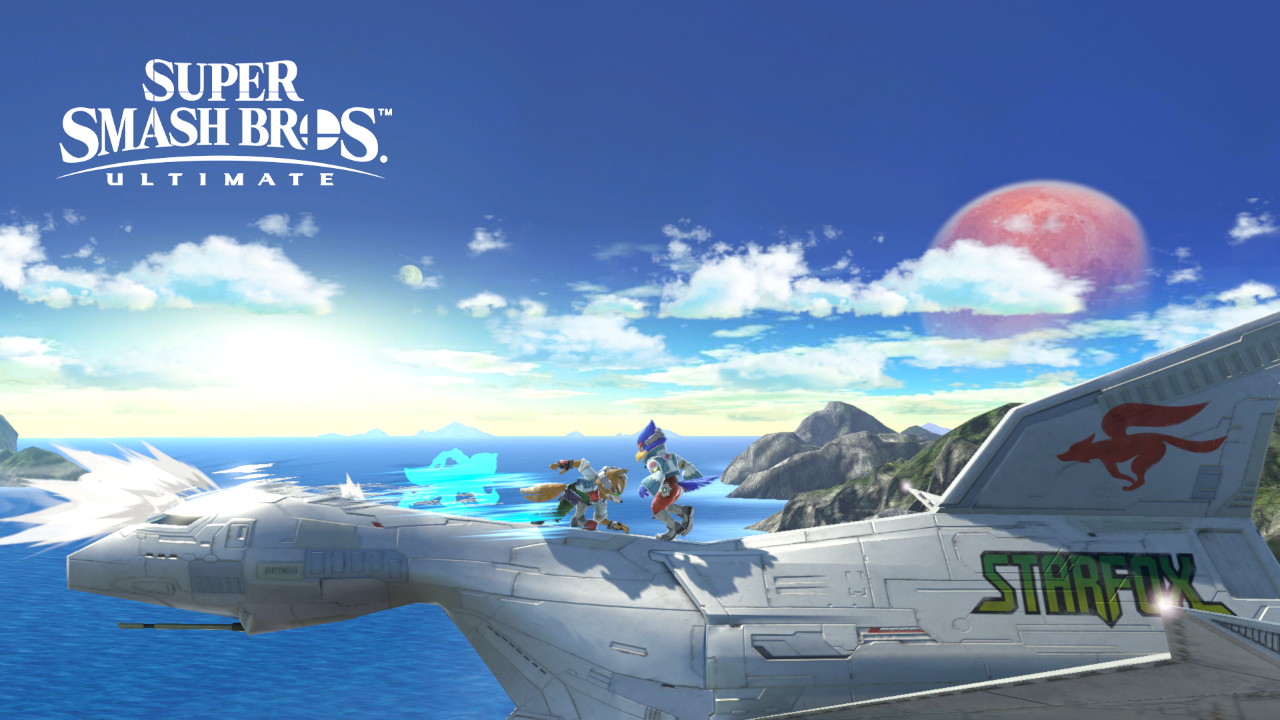
Corneria – advanced guide to Super Smash Bros. Ultimate arenas and scenarios
The ship of the Star Fox mercenary group, the Great Fox, has already been the background to the battles of the characters in the first Smash with the name Sector Z. The ship, acting as the main platform, plays the same role in the level Corneria. As the name suggests, the change of background does not affect the level design. Rather, it is the dangers that make this scenario peculiar. Specifically, pay attention to the cannons mounted on the front of the ship: they can act as a platform if necessary, but if you are on them when they fire you will be doomed. Ditto for the Arwing, or the spacecraft that fire on the arena and, stopping there for too long when they act as platforms, will take you away.
- Origin: Star Fox (stilisticamente, Lylat Wars/Star Fox 64)
- Stage representative of: Fox, Falco
- History: Corneria is the planet that the Star Fox team must defend against the forces of terrorist Andross, including the rival mercenaries of the Star Wolf group. The buildings here are certainly in a better state than how they are reduced in Star Fox 64 … ah, a little easter egg for you: use Fox or Falco and press ↓ on the D-pad (for a fraction of a second) and you will assist to one Smash provocation special.
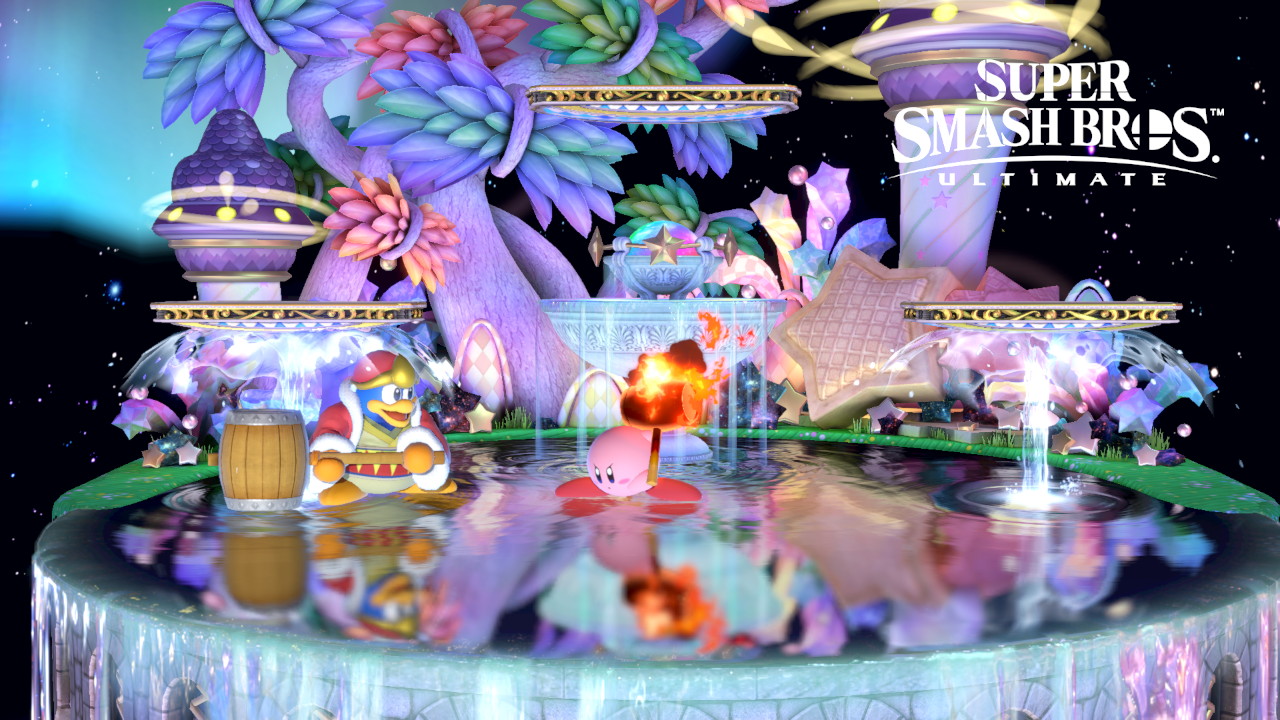
The Fountain of Dreams – advanced guide to Super Smash Bros. Ultimate arenas and scenarios
One of the most harmless arenas in the game, without however giving up that irresistible touch of showmanship. The Fountain of Dreams it has an identical layout to Le Rovine, with one difference. The three smaller platforms, in fact, occasionally vanish into the ground, only to re-emerge.
- Origin: Kirby’s Adventure
- Stage representative of: Kirby, King Dedede
- History: The (initial) theater of the final confrontation of Kirby’s Adventure consists of a fountain in which the Nightmare Wizard has been sealed. The Star Scepter is in the hands of King Dedede, but since Kirby has the bad habit of “shooting first and asking questions later” the hero inevitably ends up stealing the Scepter and slipping it into the fountain, freeing the demon. Ironically, Melee’s graceful Gourmet Race rearrangement made its way into Adventure for GBA’s remake, Nightmare in the Land of Dreams. As for the Fountain, she reappeared as a scenario in Kirby Fighters Deluxe for 3DS and the Switch sequel, Kirby Fighters 2.
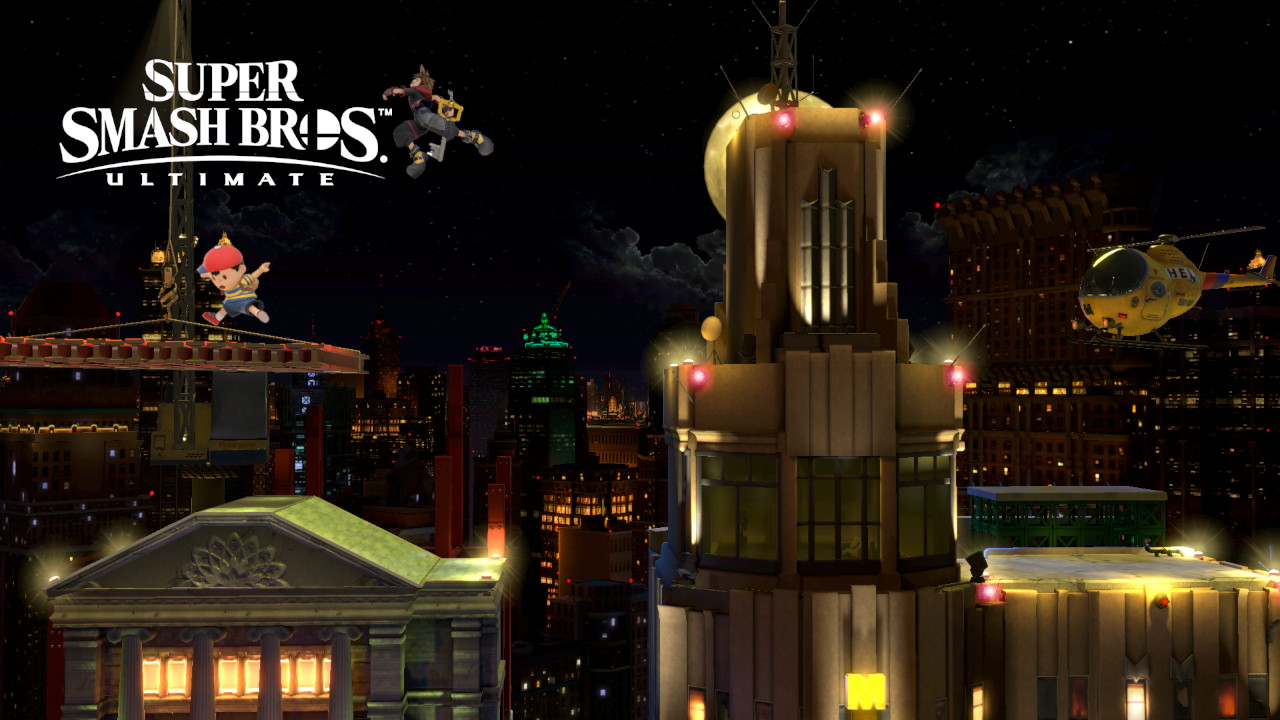
Fourside – advanced guide to Super Smash Bros. Ultimate arenas and scenarios
This arena (large, but never worthy of the podium in this sense) refers to the metropolis of EarthBound and, as such, makes buildings its own layout. The occasional UFO provides a platform as large as it is slippery, but otherwise Fourside it has no dangers whatsoever.
- Origin: MOTHER 2/EarthBound
- Stage representative of: Ness
- History: There are two cities from EarthBound featured in the game: one is Onett, and the other is Fourside. The presence of English numbers in the names is not accidental: in fact, each name indicates the literal order of visit in the game of origin. The other two, for the curious, are Twoson and Threed. Just as Eagleland is North America in MOTHER sauce, Fourside intends to replicate New York. Ironically, there are other Big Apple-inspired arenas in the game, such as New Pork City and New Donk City Hall. But we’ll get there.
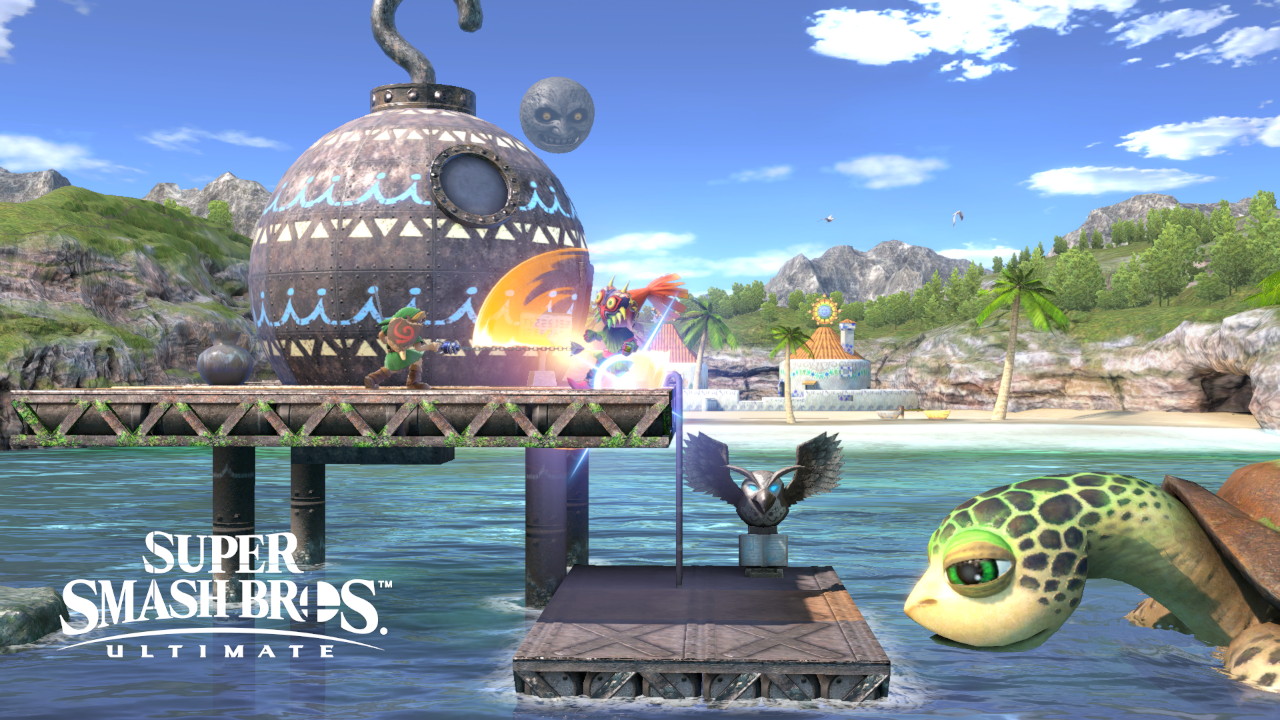
The Big Bay – advanced guide to Super Smash Bros. Ultimate arenas and scenarios
Representing The Legend of Zelda: Majora’s Mask, we have the first and last arena inspired by the distorted world of Termina. The Great Bay offers a main platform, two smaller platforms on the water, a huge turtle that dives and re-emerges as it pleases, and the occasional cartographer Tingle balloon (which can be destroyed).
- Origin: The Legend of Zelda: Majora’s Mask
- Stage representative of: Child Link
- History: For those who do not know what happens in that of Termina, it is a dark version of Hyrule destined for a premature apocalypse. A lost child, the Skull Kid, finds the Mephistophelic mask of Majora in his hands, with which his pranks are transformed into hexes and other curses. The largest has transformed the moon into a… well, Moon with bruxism and an unhealthy attachment to the earth’s crust that lasts for three days (both attachment and the earth’s crust). Only the Four Giants can stop it from falling, and that’s exactly what happens in the background during the clashes.
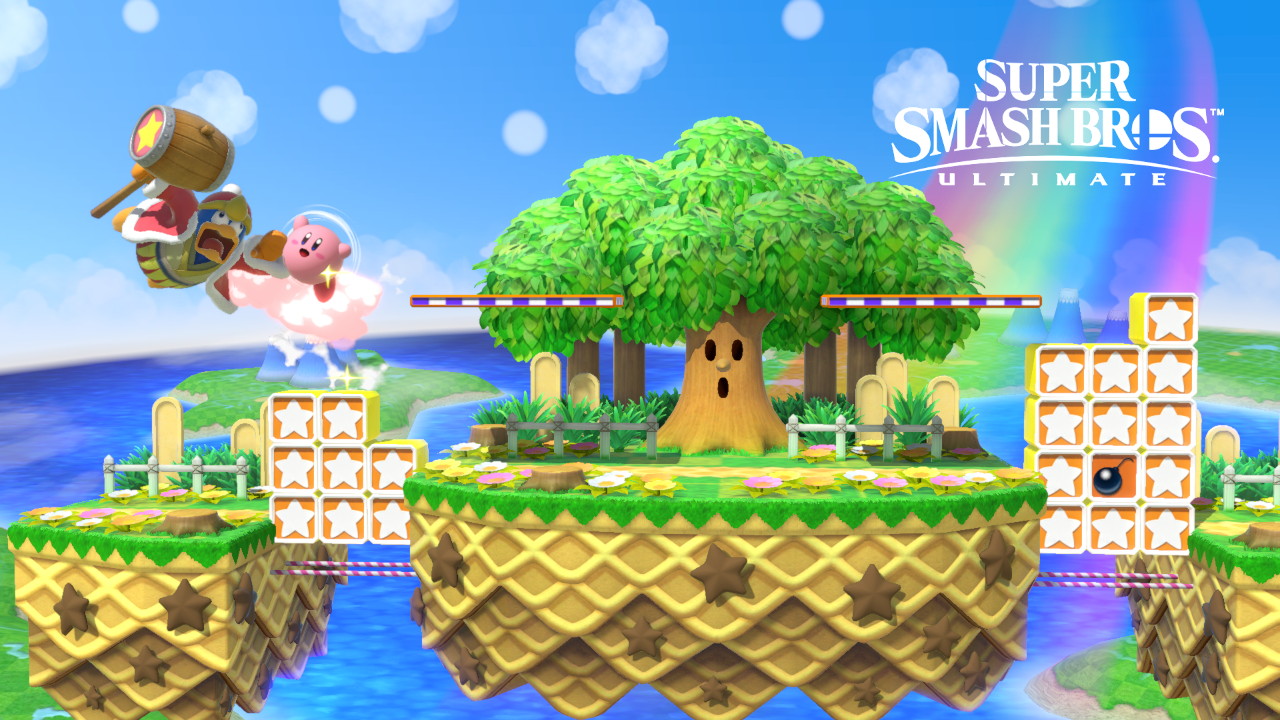
The Green Flower Bed – Super Smash Bros. Ultimate Arena and Scenario Advanced Guide
When we say proceed in small steps. The green flowerbed it just expands on the concepts already seen in Dream Land (64), offering three main platforms, two groups of blocks that separate them, and a couple of smaller platforms. As always, Whispy Woods will take care of contributing to the clash with his usual gusts of wind.
- Origin: serie Kirby
- Stage representative of: Kirby
- History: The original name of the arena, Green Greens, is also that of the first level of Kirby’s Dream Land, and therefore also the first setting of the saga in general. The Game Boy chapter received a remake in the first mode of Kirby Super Star (Kirby’s Fun Pak in Europe), Spring Breeze. The adventure was then renamed in Italian as Light Breeze in a further remake, Kirby Super Star Ultra for Nintendo DS.
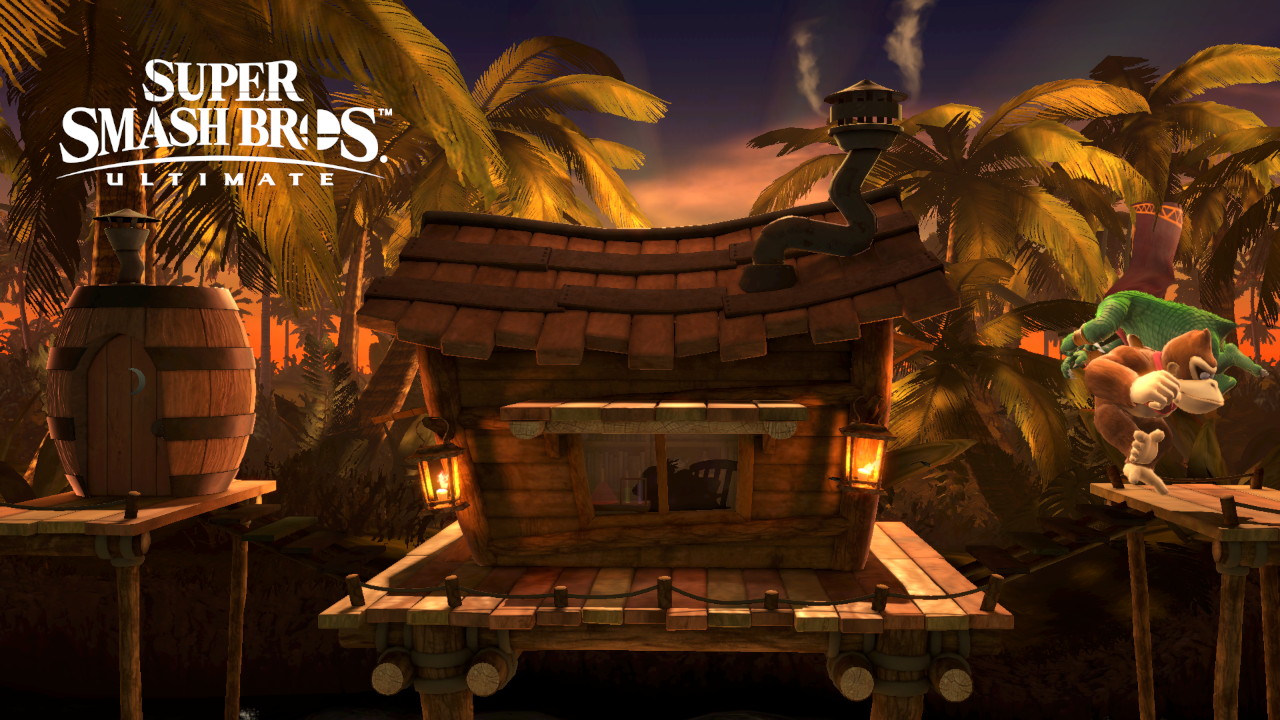
Jungle Cabin – Super Smash Bros. Ultimate arena and scenario advanced guide
The transposition of the simian world in Melee blends Donkey Kong Country and Donkey Kong 64. Ne The Hut in the Jungle, we can find three main platforms, a secondary one in the center and water at the bottom. Unlike the water of the Grande Baia and other similar arenas, that of the Capanna is very agitated: you can stay afloat for a few seconds, but the current will drag you ruinously over the border to the left of the scenario. Also pay attention to the Klaptrap, the little crocodile that will occasionally jump out of the swollen river to make sure!
- Origin: Donkey Kong Country, Donkey Kong 64
- Stage representative of: Donkey Kong, Diddy Kong
- History: As we have seen with the Kongo Jungle, here too the splendor of the Kong’s natural habitat stands proudly at sunset. The one in the center is Cranky’s hut, but the silhouette suggests that the clan’s octogenarian is intent on mixing potions like in the ape adventure on Nintendo 64.
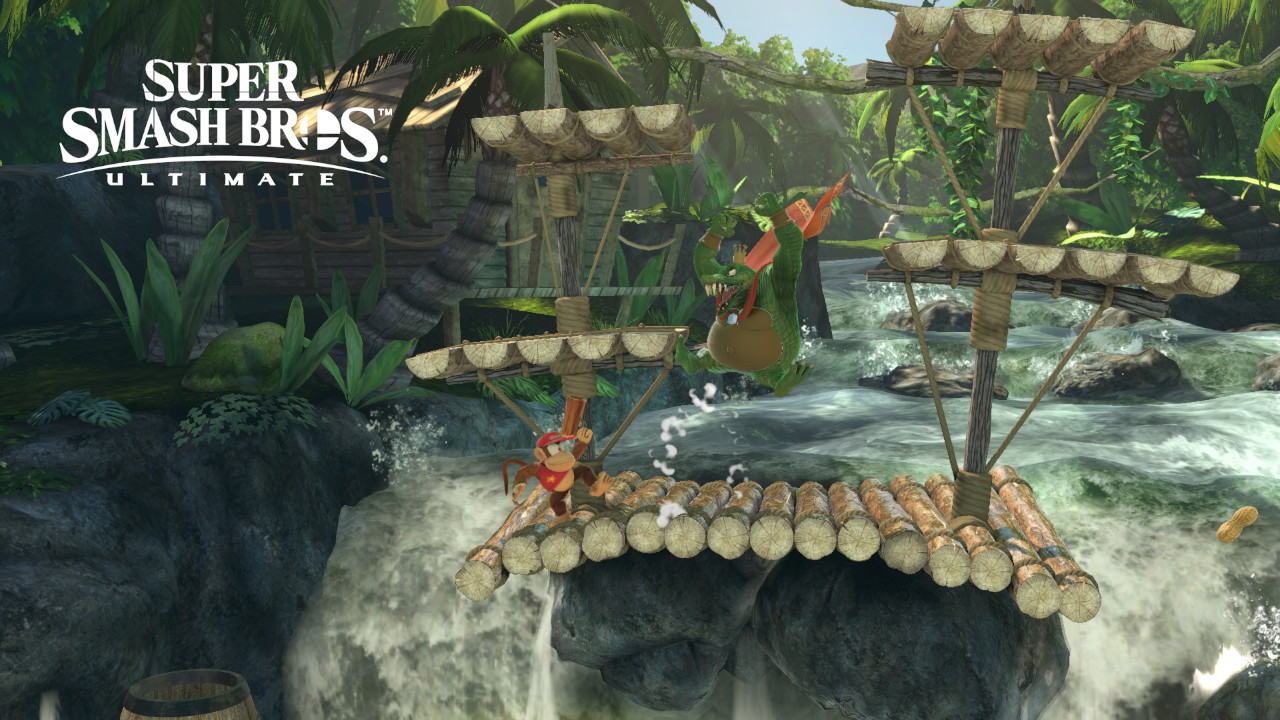
Kongo Falls – Super Smash Bros. Ultimate arena and scenario advanced guide
Kong -close the monkey arenas from Melee for today with the Kongo Falls. The layout is simple to describe: a main platform, four smaller ones at the top, a cliff on the right to save himself in extremis and a cannon under the arena. The latter goes back and forth like its two-dimensional counterpart in the Kongo Jungle. There are two dangers …






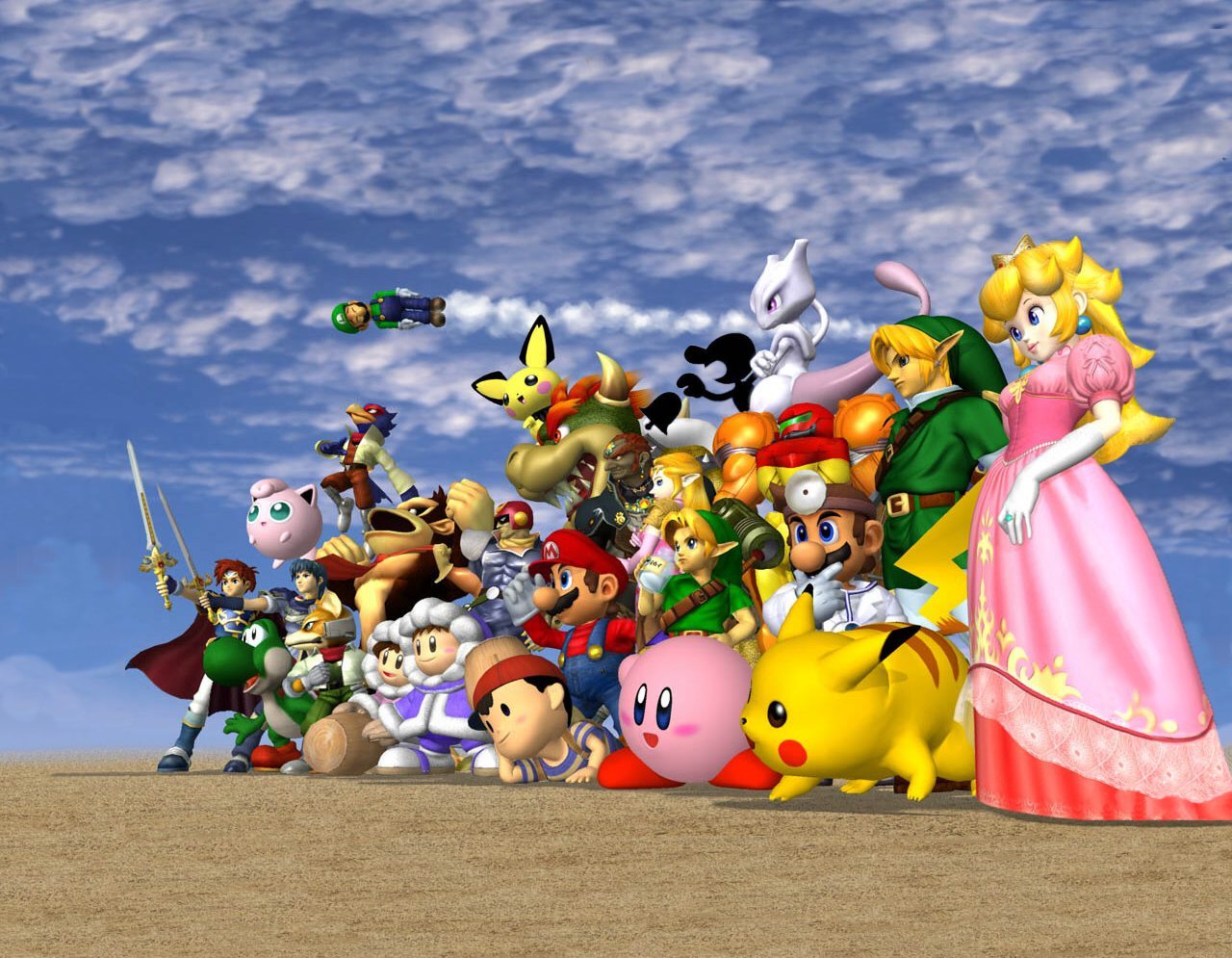





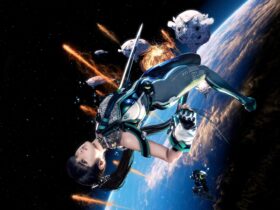
Leave a Reply
View Comments